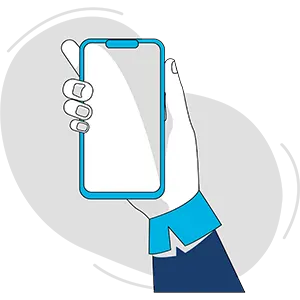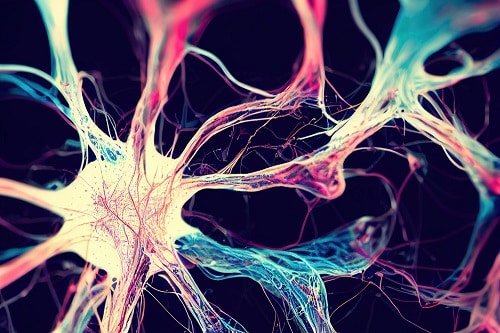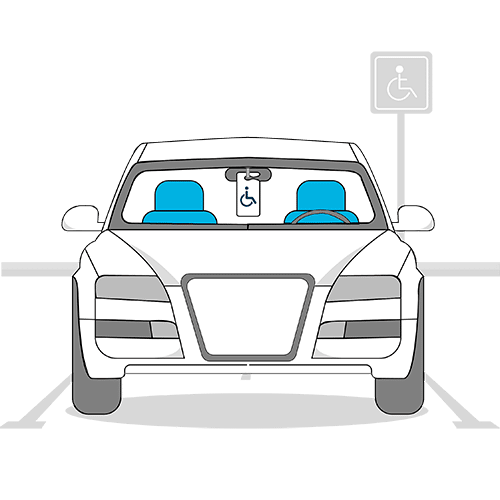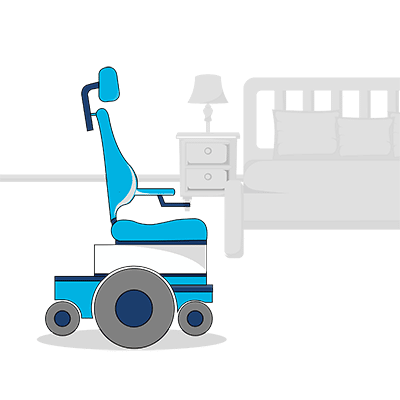Globally, an estimated 400,000 people live with Motor Neurone Disease (MND) and about 5,000 people are diagnosed each year. This is why there’s been ongoing, intensive Motor Neurone Disease research around treatments and trying to find a cure. With June being Motor Neurone Disease Awareness Month, we take a look at what research exists for treating the disease and prolonging quality of life for those who have it.
Table of contents
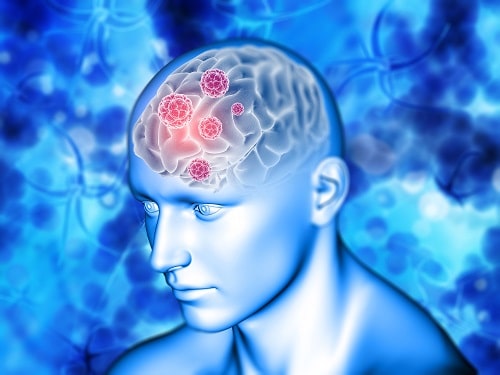
What is Motor Neurone Disease?
Motor Neurone Disease is a progressive neurodegenerative disease that affects nerve cells in the brain and spinal cord.
These nerve cells, called motor neurones, control the muscles that allow us to move, speak, breathe, and swallow. When motor neurones die, the muscles they control become weak and waste away. The disease usually progresses rapidly and with devastating effects.
It’s a rare disease – Australia has around 2,000 people living with it, with 200 new diagnoses annually – and the average life expectancy after diagnosis is about 2 to 5 years, but some people live much longer.
There’s currently no cure for MND, but there are treatments that can help to slow the progression of the disease and improve quality of life. These Motor Neurone Disease treatments include medication, physical therapy, speech therapy, and occupational therapy.
Read more facts about MND in our article “Recognising Motor Neurone Disease Week”, which is held in the third week of June every year.

What is Motor Neurone Disease Awareness Month?
While 21 June is MND/ALS Global Awareness Day, Motor Neurone Disease Awareness Month is a month-long campaign to raise awareness of MND. The purpose is to educate the public about MND, its symptoms, and its impact on people’s lives. It is also an opportunity to raise funds for research into a cure.
Here are some ways you can get involved:
- Wear a blue ribbon, the official symbol of MND awareness.
- Donate to a MND charity.
- Organise or participate in a fundraising event.
- Talk to your friends and family about MND.
- Share information about MND on social media.
The most well-known person to have suffered with the disease is Stephen Hawking. He’s said to have had amyotrophic lateral sclerosis (ALS) – one of several types of motor neurone diseases – for over 50 years.
In Australia, Tim Ferguson is the best known advocate in the sphere of multiple sclerosis, motor neurone disease, cerebral palsy and acquired brain injury awareness. Read about Tim and other Aussie Wheelchair Users Who Are Changing Our Culture.
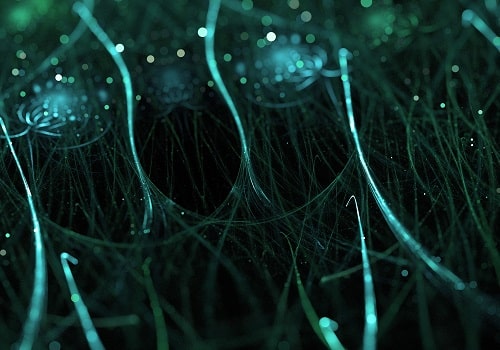
Research areas
Scientists are exploring many areas of research into motor neurone disease, including trying to understand what causes it and why some people are more at risk than others. Researchers are also trying to understand how MND progresses and what changes happen to the nerves that control movement.
With that information, they’re aiming to develop new treatments that can slow the progression of MND or even cure the disease. They’re also developing new ways to manage the symptoms, such as weakness, fatigue, and difficulty breathing. Other research is around improving the quality of life for people with MND and their families.
There’s still much that we don’t know about MND, but the science is ongoing and there’s hope new treatments will be developed in the future. Here are three important current MND research areas:
Drug therapy – Tofersen
Tofersen is a drug that’s being used to treat ALS. It’s only effective for people who have a very specific gene mutation called the SOD1. Only 2% of those living with ASL have the SOD1 gene.
Nevertheless, scientists have shown it can slow the progression of ASL. It’s administered by injection into the spinal cord once every four weeks. Patients generally tolerate Tofersen well and the most common side effects are reactions at the injection site and fatigue. The US Food and Drug Administration approved Tofersen as the first drug to treat MND, but more research is needed to determine its long-term effectiveness.
Motor Neurone Disease research – Gene therapy
Gene therapy is a promising new treatment for MND. It involves using genetic engineering techniques to deliver a healthy copy of a gene to cells that have lost their copy of the gene. This can help to slow the progression of the disease and improve the quality of life for people with MND.
Researchers are looking at a number of different gene therapy approaches. One is to use viral vectors to deliver a healthy copy of the gene to the cells. Scientists have modified small pieces of virus so they cannot cause disease. They can then use these modified viruses to deliver genes to cells in a variety of tissues, including the brain and spinal cord.
Gene therapy is still in its early stages of development, but it has the potential to be a game-changer for MND. There are a number of clinical trials underway and the results will be closely watched. If gene therapy is successful, it could provide a new hope for people living with MND.
Motor Neurone Disease research – Stem cell therapy
Stem cells are special cells that can turn into any type of cell in the body. This makes them a potential Motor Neurone Disease treatment.
Researchers could use stem cell therapy to replace damaged motor neurones or to produce neurotrophic factors. These are proteins that help to protect and promote the growth of motor neurones. If stem cell therapy is successful, it could help to improve muscle function and slow the progression of MND. Obviously this means it could improve the quality of life for people with the disease.
Stem cell therapy is a promising new treatment for a variety of diseases, but it also has potential risks. For example, the patient’s immune system could reject the stem cells or the stem cells could become cancerous.
Now you know more about treatment advances for MND and can share your knowledge with others this Motor Neurone Disease Awareness Month, why not read up about other topics. We have all kinds in our Blue Badge Insurance blog, including:
- 3 Misconceptions About Parkinson’s Disease
- World Autoimmune Arthritis Day – 20 May
- Getting Funding for Your Disability Converted Car
- Disability Art Creators and Organisations Across Australia
- The NDIS Overhaul: What You Need to Know
Mobility for those with MND
As MND affects the nerves that control voluntary movement, it can lead to muscle weakness, spasticity, and difficulty walking, standing, and transferring. Mobility aids like wheelchairs and scooters can help those living with MND maintain their independence and quality of life, even as the disease progresses.
You can protect your mobility aids against theft and accidental damage with wheelchair insurance or mobility scooter insurance. Mobility aids are a big investment, so it’s good to know that there are options available to help you keep them safe and in good condition.
Blue Badge is an Australian disability insurance specialist that provides this insurance at a reasonable cost. We also offer a 25% discount to people who have a disability parking permit. Why not take a few minutes to get a quote?

